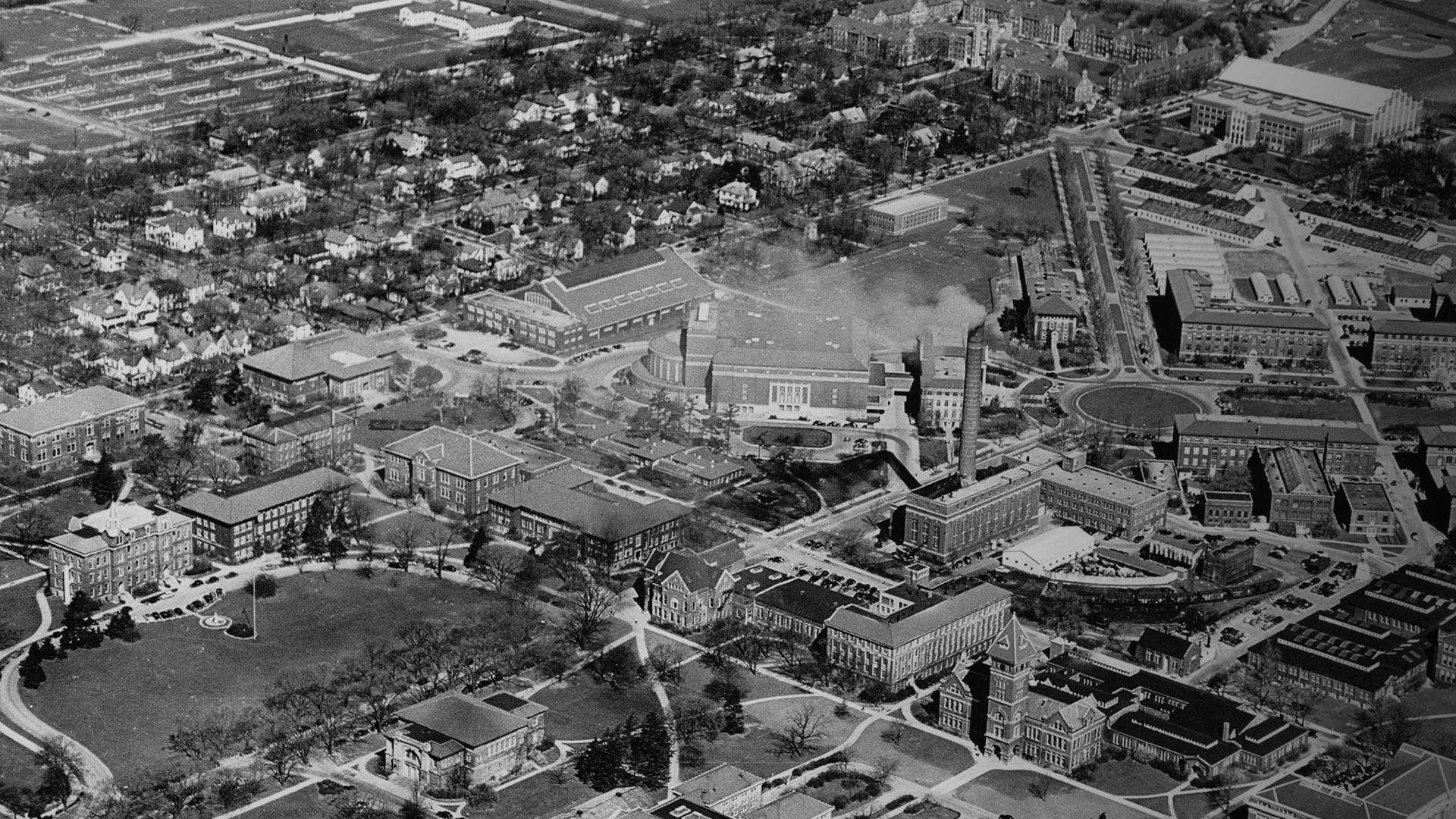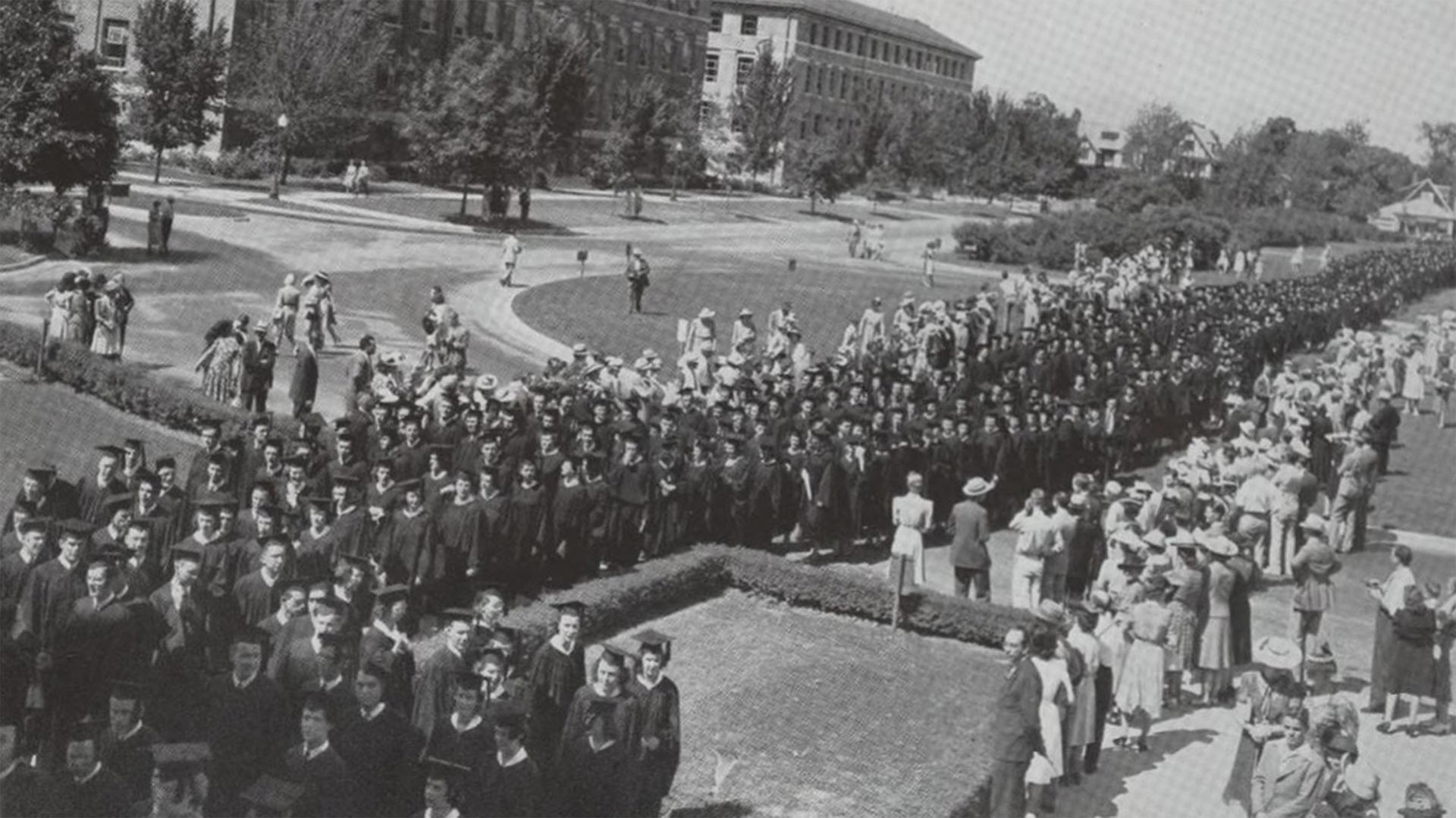Purdue History

1862
President Abraham Lincoln signs the Morrill Act, which granted public lands to any state that agreed to use the land sale proceeds to maintain a college teaching “agriculture and the mechanic arts.”
1865
The Indiana General Assembly votes to participate in the Morill Act plan and takes steps to establish an institution.
1869
The Indiana General Assembly chooses the Lafayette area for the new institution and accepts a $150,000 gift from John Purdue, as well as $50,000 from Tippecanoe County and 100 acres from local residents. The legislature names the new school Purdue University.
1871
Groundbreaking for the first campus buildings.
The first buildings on campus include the Boiler and Gas House, Military Hall and Gymnasium, Ladies Hall, Purdue Hall and the Pharmacy Building. All of these building were completed by 1874, and none of them remain today.
1872
Purdue’s first president, Richard Owen, starts his term.
1874
Classes begin with six instructors and 39 students.
1875
John Bradford Harper earns the first Purdue University degree.
1877
University Hall (known as the Main Building) is completed, becoming the central building on the Purdue campus. Today, it remains the oldest building on campus.
1879
The first telephone is installed on campus.
1886
The University Band is established.
1887
Old Gold and Black are adopted as the university’s official colors.
1889
The Purdue yearbook, the Debris, is first issued.
The first issue of the student newspaper, The Exponent, is published.
1890
Purdue’s first seal is created by Bruce Rogers, but it is never officially recognized by the university.
1891
Under accusations of recruiting athletes from boiler shops, the “Boilermakers” name is adopted for Purdue’s athletic teams. An 85,000-pound Schenectady No. 1 Locomotive engine is purchased.
1894
The Varsity Glee Club is formed.
1895
The Big Ten Conference is established under the leadership of Purdue President James Smart.
Abby Phelps Lytle, head of the Purdue art department, designs a new, official seal for the university. Lytle’s design incorporates three motifs still seen in the seal today: the shield, the griffin and the Uncial typeface.
1897
The first doctorate of philosophy (PhD) from Purdue is awarded, in agriculture.
1912
The Purdue fight song, “Hail Purdue,” is written.
The Purdue Alumni Association is formed.
1922
The Purdue radio station, WBAA, is licensed as the first radio station in Indiana.
1924
The Purdue Memorial Union and Ross-Ade Stadium open.
1925
The Old Oaken Bucket football trophy is introduced.
1929
The Graduate School is officially established.
1930
The Purdue Research Foundation is incorporated.
1934
The Purdue University Airport is established as the first university-owned airport in the nation.
1940
The Boilermaker Special (the official Purdue mascot in the form of a locomotive mounted on an automobile chassis) is presented to the student body at a convocation ceremony.
1944
The Debris yearbook first uses the image of a barrel-chested, mallet-wielding boilermaker called “Pete.”
1959
The Bachelor of Arts degree is first offered.
1967
Boilermakers defeat USC Trojans by a score of 14-13 in Purdue’s first Rose Bowl appearance.
1979
Purdue chemistry professor Herbert C. Brown is awarded the Nobel Prize in chemistry for his work with boron compounds, which has revolutionized synthetic organic chemistry.
1988
The Rube Goldberg Machine Contest goes national.
1989
The Class of 1939 Water Sculpture, standing at the center of Purdue Mall, is dedicated. It is also known as the Purdue Mall Fountain or, less accurately, as the Engineering Fountain.
1990
The Class of 1950 Lecture Hall opens for classes.
1992
A power plant’s brick smokestack that acted as a common campus landmark for students is razed. The power plant was going out of service, meaning the smokestack would have rapidly deteriorated. Plans for another soaring structure — the Purdue Bell Tower — are made.
1995
The bells from the second Heavilon Hall are used in the construction of the Purdue Bell Tower.
2001
Discovery Park at Purdue is founded.
2005
The Boilermaker statue, sculpted to celebrate the lore and legend of the Purdue Boilermakers, is dedicated.
2007
The Neil Armstrong statue is unveiled in front of Neil Armstrong Hall of Engineering. It depicts Neil Armstrong as an undergraduate student, holding a slide rule ready for use.
2008
The Unfinished Block P sculpture, which symbolizes that all students, alumni, community members and friends of Purdue University are a work in progress, is dedicated.
2009
The life-size Amelia Earhart statue, meant to inspire students to pursue their dreams, is unveiled, connecting the campus to its early history in flight.
2010
Professor Ei-ichi Negishi wins the Nobel Prize in chemistry for developing palladium-catalyzed cross-coupling, which has applications for medicine, agriculture and electronics.
2013
President Mitchell E. Daniels, Jr. unveils the university’s Purdue Moves initiatives, aimed at helping Purdue deliver higher education at the highest proven value.
2014
Purdue’s international student enrollment becomes tops among U.S. public universities.
2023
Purdue reaches a record high level of external research funding, securing $613 million in fiscal year 2023.
2024
Purdue University in Indianapolis, an expansion of the West Lafayette campus, welcomes its inaugural class of 800+ students.
